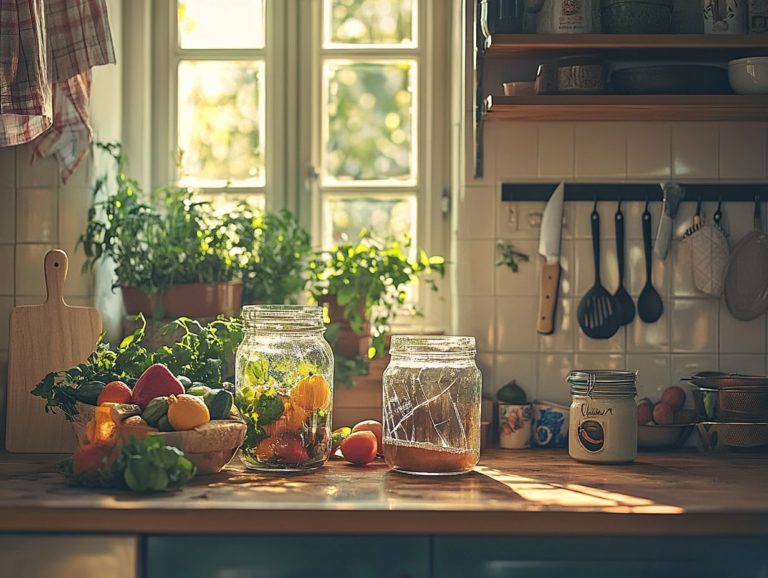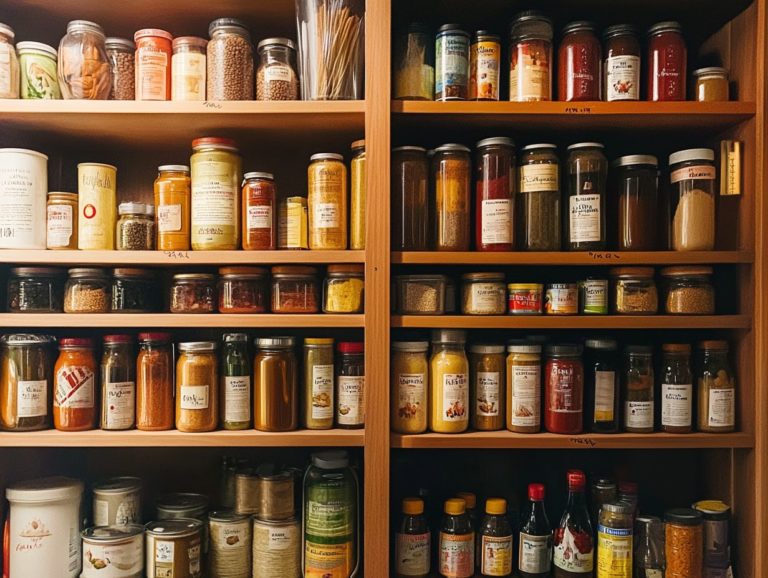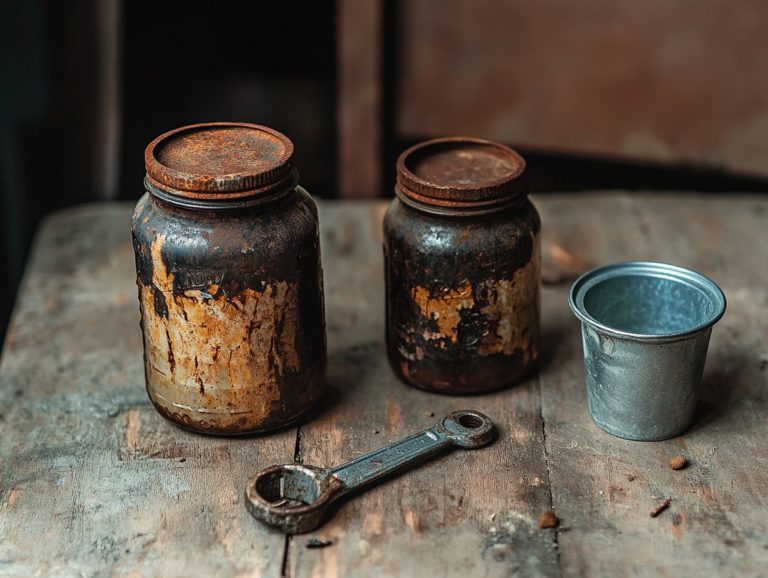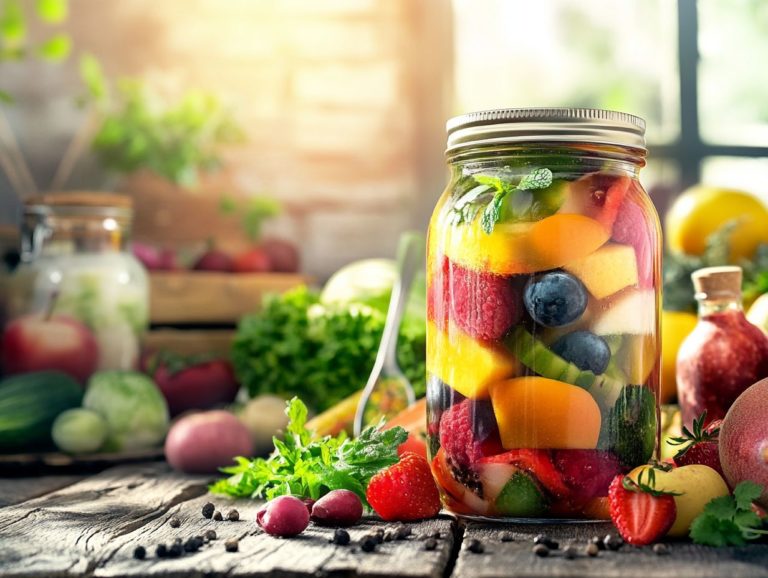How to Address Canning Jar Cloudiness
Canning jars are invaluable for preserving your favorite foods, but encountering cloudiness can be quite vexing. Let s uncover the reasons behind that pesky cloudiness!
This article explores the causes of the hazy appearance and presents practical solutions to restore clarity using everyday household items like vinegar and baking soda. You ll also discover tips to prevent cloudiness in the future and guidance on when it s time to say goodbye to those jars.
Dive in now to transform your canning experience and keep your jars crystal clear!
Contents
Key Takeaways:
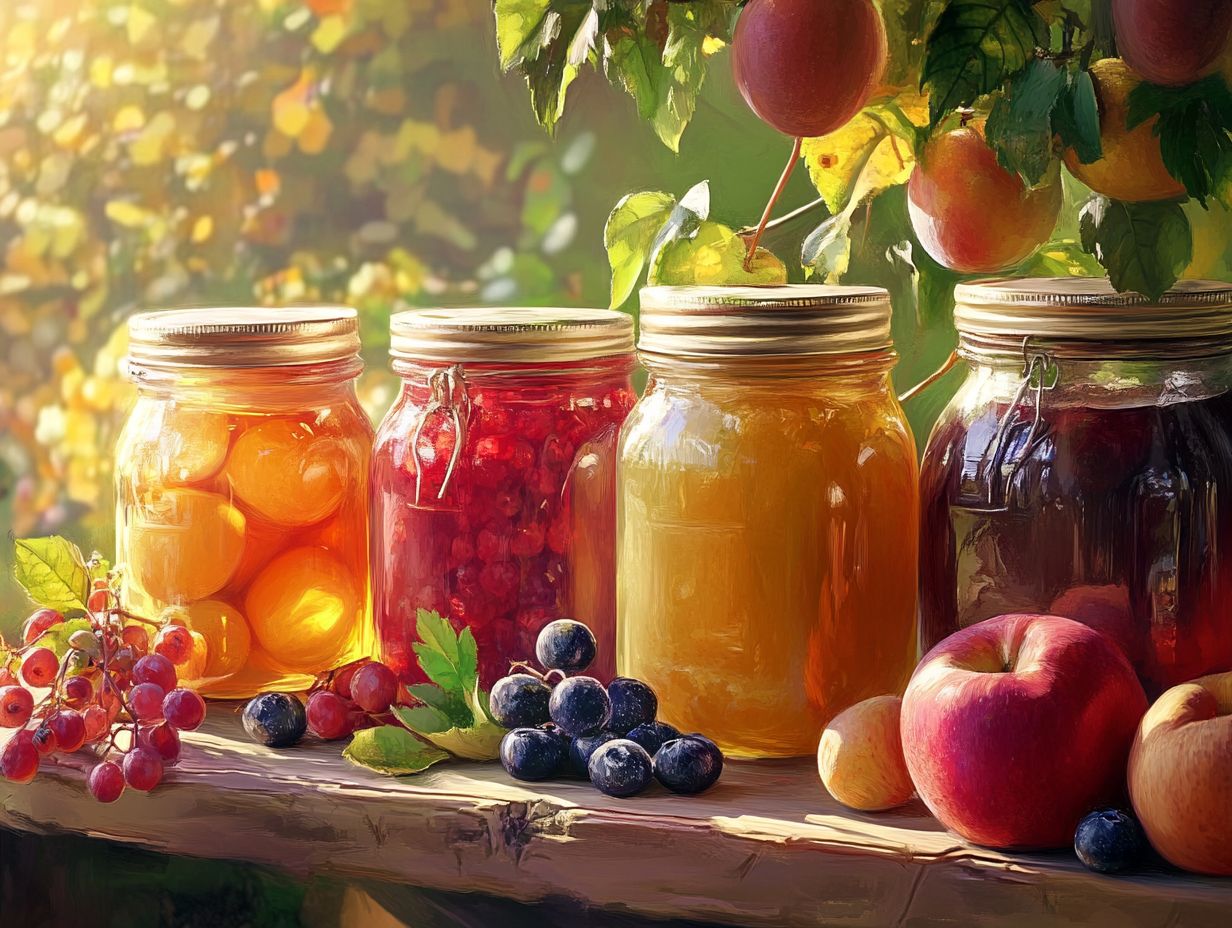
- Regularly check your canning jars for cloudiness, as it can be a sign of spoilage.
- Use natural remedies like vinegar or baking soda to remove cloudiness instead of harsh chemicals.
- Take preventative measures to avoid cloudiness, such as properly sterilizing jars and storing them in a cool, dry place.
Understanding Canning Jar Cloudiness
Understanding the cloudiness in your canning jars is essential for effective food preservation. This cloudy canning liquid can arise from several sources, such as hard water and mineral deposits that accumulate on the glass during the canning process.
To ensure both food safety and the visual appeal of your jars, it s important to tackle this issue and understand the underlying causes. Cloudy jars not only detract from the overall look but can also compromise the quality of the contents you ve worked hard to preserve.
Therefore, knowing how to properly clean and maintain your canning jars is crucial for achieving successful food preservation.
What Causes Cloudiness in Canning Jars?
Cloudiness in your canning jars often results from hard water, which contains minerals that leave behind unsightly deposits. These mineral deposits can create a buildup that clouds the appearance of your jars and can be challenging to remove.
The main culprits are typically calcium and magnesium, which mingle in the water and settle on the surfaces of your jars during use or storage. When these minerals react with the acids in canned foods, they can form opaque layers that hinder visibility. For instance, jars filled repeatedly with tomatoes or pickling brine may display increased cloudiness due to such interactions.
This mineral buildup isn t just a visual nuisance; it can also disrupt the sealing integrity of your jars, potentially compromising the safety of your preserved goods. By understanding water hardness, you can make informed choices for your canning.
Methods for Addressing Canning Jar Cloudiness
You have several effective methods for tackling cloudiness in canning jars, ensuring they remain pristine and ready for food preservation. One of the most recommended techniques is to use a vinegar treatment; the acetic acid in cleaning vinegar works wonders at breaking down hard water deposits, restoring your jars to a sparkling state.
You can also use soapy water for cleaning or a baking soda solution to expand your cleaning options. Each method has its unique advantages and can help eliminate the film that accumulates over time, enhancing both the appearance and functionality of your jars.
Removing Cloudiness with Vinegar
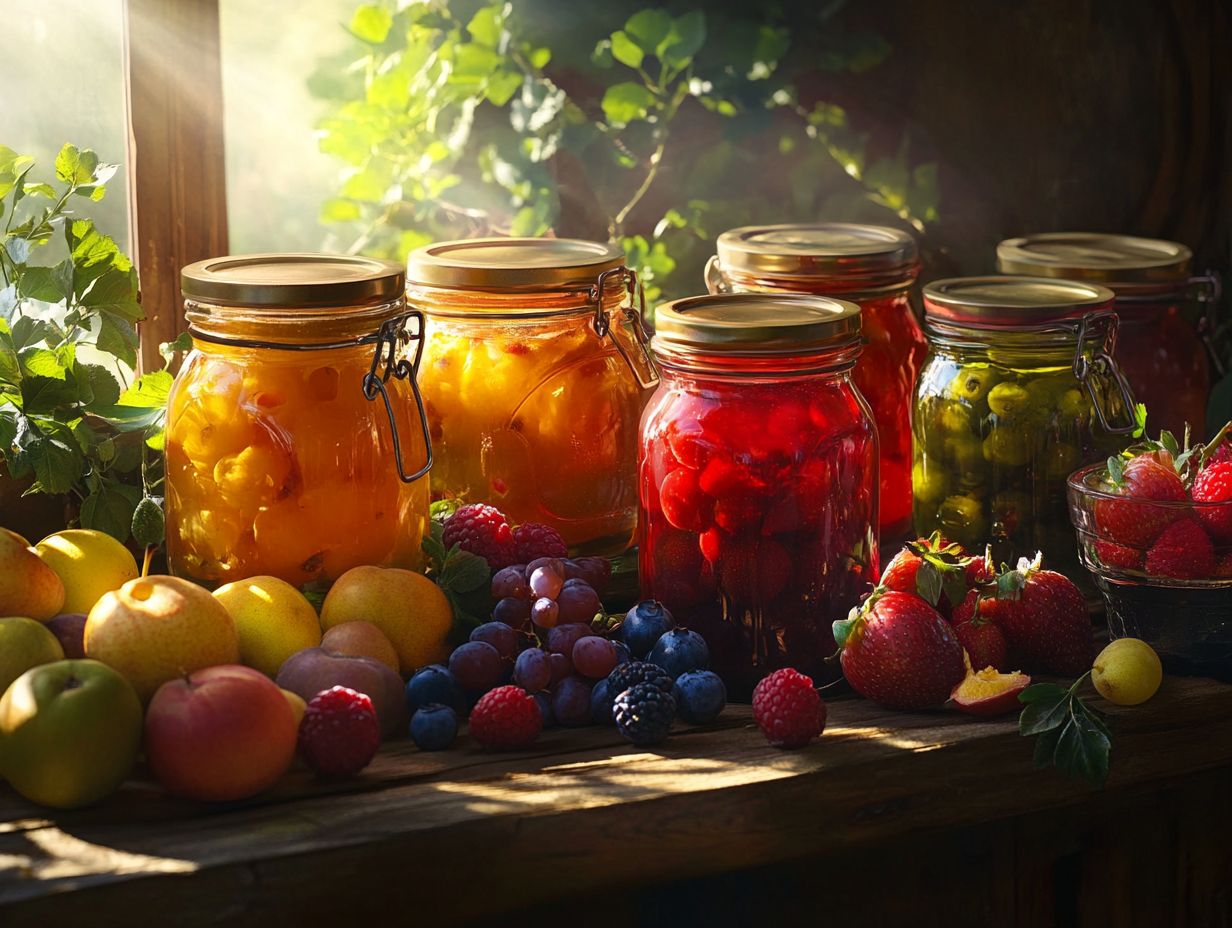
Removing cloudiness with vinegar is an incredibly effective cleaning method that harnesses the cleaning powers of white vinegar to dissolve hard water deposits and restore clarity to your canning jars. This vinegar treatment not only cleans but also sanitizes your jars, ensuring they re safe for food preservation. This method is easy to use, making it accessible for everyone and providing a natural, efficient solution to the problem of cloudy jars.
To kick off the process, mix one part white vinegar with three parts water to create a potent solution that tackles those stubborn stains. Submerge the affected jars in this mixture and let them soak for at least 30 minutes, allowing the vinegar to break down the mineral deposits. Not only will this method enhance the aesthetic appeal of your jars, but it will also uphold food safety standards by preventing any lingering bacteria.
Using vinegar gives you an eco-friendly alternative to harsh chemicals, making it an excellent choice for both cleaning efficiency and household safety. With just a simple soak, you ll get ready to enjoy sparkling clear jars that are perfect for your next canning adventure!
Using Baking Soda to Clear Cloudiness
Baking soda is your go-to natural remedy for banishing cloudiness from canning jars. It acts as a gentle abrasive, expertly lifting stubborn hard water problems which contains high levels of minerals without compromising the integrity of your jars. This cleaning solution not only keeps your jars safe but is also environmentally friendly perfect for those who cherish natural cleaning methods.
When you mix baking soda with water, you create a paste that tackles that unsightly film and restores your jars to their original brilliance, helping to operate effectively in food preservation.
To whip up this mixture, simply combine three tablespoons of baking soda with a tablespoon of water, adjusting the consistency to your liking. Apply the paste to the cloudy areas of your jars using a soft cloth or sponge, letting it sit for about 10 15 minutes before rinsing thoroughly with warm water to ensure your jars are clean. This technique effectively combats cloudiness while sparing your jars from the harshness and potential damage that often comes with chemical cleaners. It s a win-win for keeping your jars looking beautiful while also being kinder to the planet.
Other Natural Remedies to Try
Along with vinegar and baking soda, you have a wealth of natural remedies at your disposal to effectively clean and restore the clarity of your canning jars. Everyday items like lemon juice and salt can be combined to create a powerful cleaning solution that tackles cloudiness while remaining safe for food-grade standards. These alternatives not only elevate the cleanliness of your jars but also offer a non-toxic approach to preserving their usability.
For a simple yet effective recipe, mix equal parts lemon juice and salt to form a paste. Apply this mixture to the cloudy areas of the jars and gently scrub with a soft cloth or sponge. The acidity of the lemon juice works wonders in breaking down grime, while the abrasive quality of salt helps remove those stubborn residues. This method is not only effective but also ensures you’re using ingredients that are safe for your home and family.
Other natural cleaning solutions, such as baking soda paste or diluted hydrogen peroxide, can further enhance your cleaning routine, ensuring your jars are sparkling clean and ready for use.
Preventing Canning Jar Cloudiness
Preventing cloudiness in your canning jars is far simpler than trying to remedy it afterward, and grasping the significance of water quality is essential in this process. Being aware of hard water issues will aid in maintaining your jars.
Hard water can cause mineral deposits that turn your jars cloudy if not addressed properly. By following a few straightforward tips to avoid this issue, you can maintain an efficient canning process and ensure your jars remain clear and pristine for all your future food preservation projects. Start applying these tips today to keep your jars looking their best!
Tips for Avoiding Cloudiness in the First Place
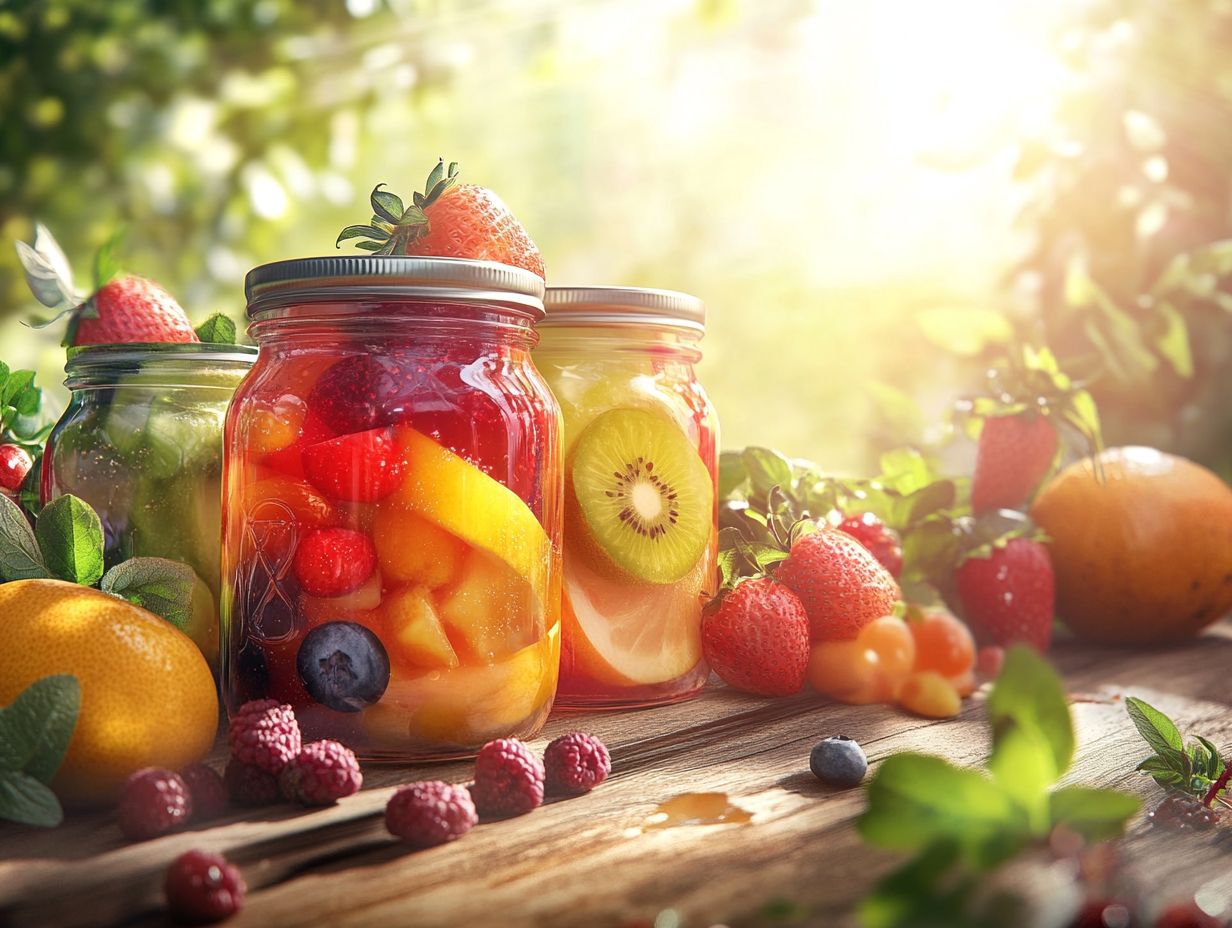
Using good strategies to avoid cloudiness will keep your jars sparkling and ready for food preservation. Start by using high-quality water for both washing and canning. Poor water can lead to mineral build-up that ruins your efforts.
Storing your jars in a clean, dry environment will help reduce the risk of cloudiness developing over time. To elevate your results even further, make it a practice to clean your jars immediately after use. If you encounter any issues, learn how to handle canning jar leakage. Residues left unattended can harden and cause cloudiness.
Consider incorporating vinegar or baking soda into your cleaning routine both are natural, effective agents against stubborn stains. Regularly maintaining your water filters is also essential. When they function effectively, they help achieve clearer outcomes in your preserved foods.
Always inspect your jars for any cracks or chips. These imperfections can trap contaminants and promote cloudiness, jeopardizing the quality of your preserved goods and leading to potential safety issues.
When to Discard Cloudy Canning Jars
Understanding when to part ways with cloudy canning jars is crucial for safeguarding food safety and maintaining the quality of your stored goods. While some cloudiness can be cleaned away, it’s vital to recognize the specific signs of spoilage and deterioration that mean you should dispose of your jars.
By familiarizing yourself with these signs, you can confidently ensure that your food preservation efforts maintain the highest standards of safety and quality, making the most out of your canning experience.
Signs of Spoilage to Watch For
Spotting spoilage is critical! If you see a cloudy appearance along with off smells, leaks, or visible mold, these are clear red flags indicating that your jars may no longer be safe for food preservation. Staying vigilant about these signs is essential for maintaining the overall safety and quality of your preserved food.
Additionally, keep an eye out for any unusual textures or bubbles developing within the jar; these could indicate fermentation or spoilage, which may compromise the food inside. Improper sealing can also lead to contamination, so it s vital to check the lids for tightness and integrity.
The implications for food safety are significant consuming spoiled goods can lead to severe foodborne illnesses. Therefore, adhering to these guidelines is not just about preserving food; it s about protecting your health and ensuring delicious, safe meals for you and your family.
Frequently Asked Questions
How do I address canning jar cloudiness?
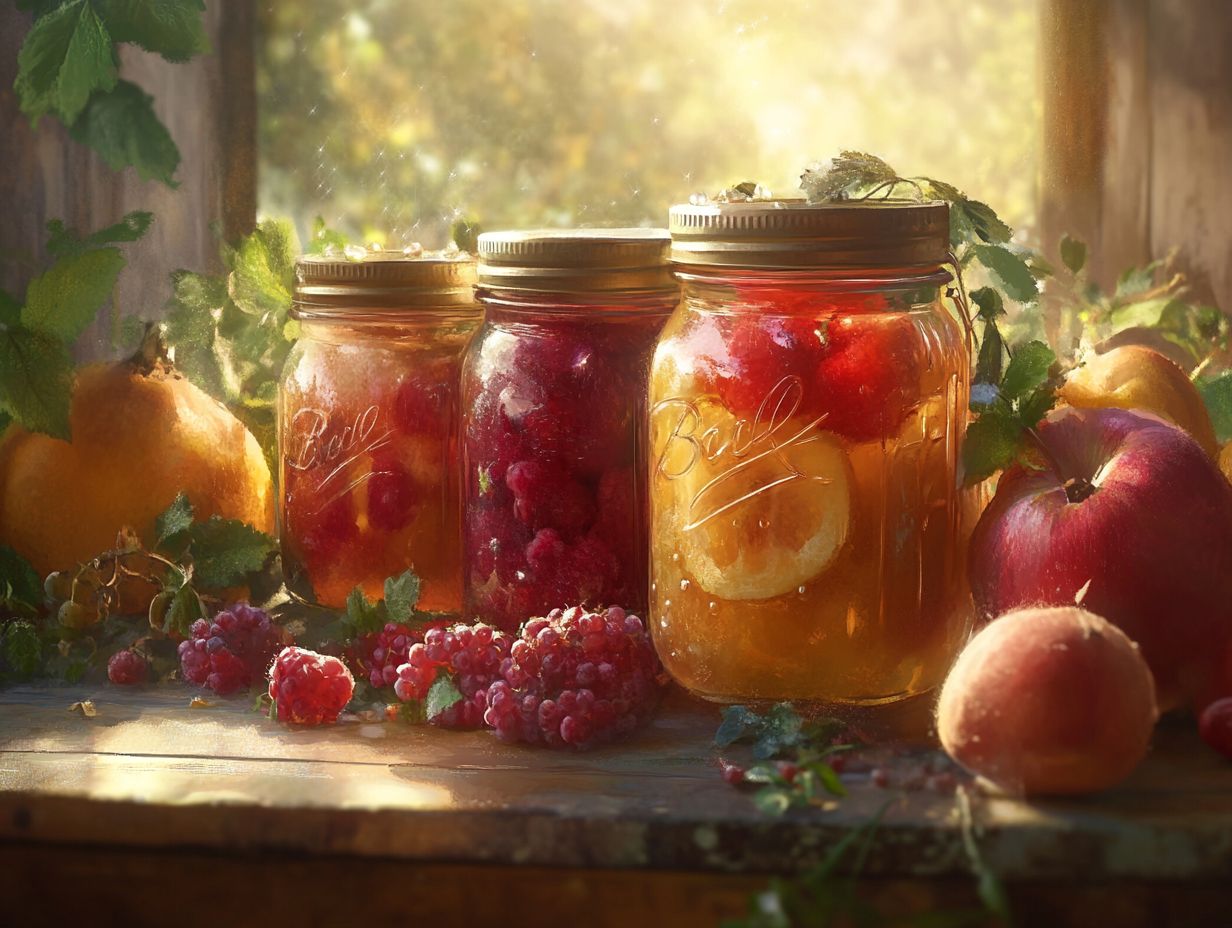
To address canning jar cloudiness, start by checking the cleanliness of your jars before using them. Wash them thoroughly with hot, soapy water and rinse them well. For those dealing with stubborn issues, refer to how to address stained canning jars to ensure your seals are secure and airtight.
If the cloudiness persists, try soaking the jars in a solution of equal parts white vinegar and water for 10-15 minutes before rinsing and using.
What causes canning jar cloudiness?
Canning jar cloudiness is usually caused by mineral deposits or residue left on the jars from previous use. It can also occur due to hard water or using old jars that have been damaged or improperly stored.
Can I still use cloudy canning jars?
In most cases, cloudy canning jars are still safe to use for canning or preserving food. However, if the cloudiness is due to visible mold or bacteria growth, it is best to discard the jars and start with clean ones.
How can I prevent cloudiness in my canning jars?
To prevent cloudiness in your canning jars, always ensure that you thoroughly clean and dry them before use. Also, use fresh lids and rings for each canning session, as they can become worn and less effective over time.
Have more questions about canning? Let us know in the comments!
Can cloudy canning jars affect the taste of my food?
In most cases, cloudy canning jars will not affect the taste of your food. However, if the hazy appearance is due to residue or mineral deposits, it may impact the appearance or texture of your canned goods.
Can I reuse cloudy canning jars?
If the cloudiness is caused by mineral deposits or residue, it is safe to reuse the jars after properly cleaning them. However, if the cloudiness is due to mold or bacteria, avoid reusing the jars! This could contaminate your food and compromise safety.


